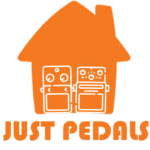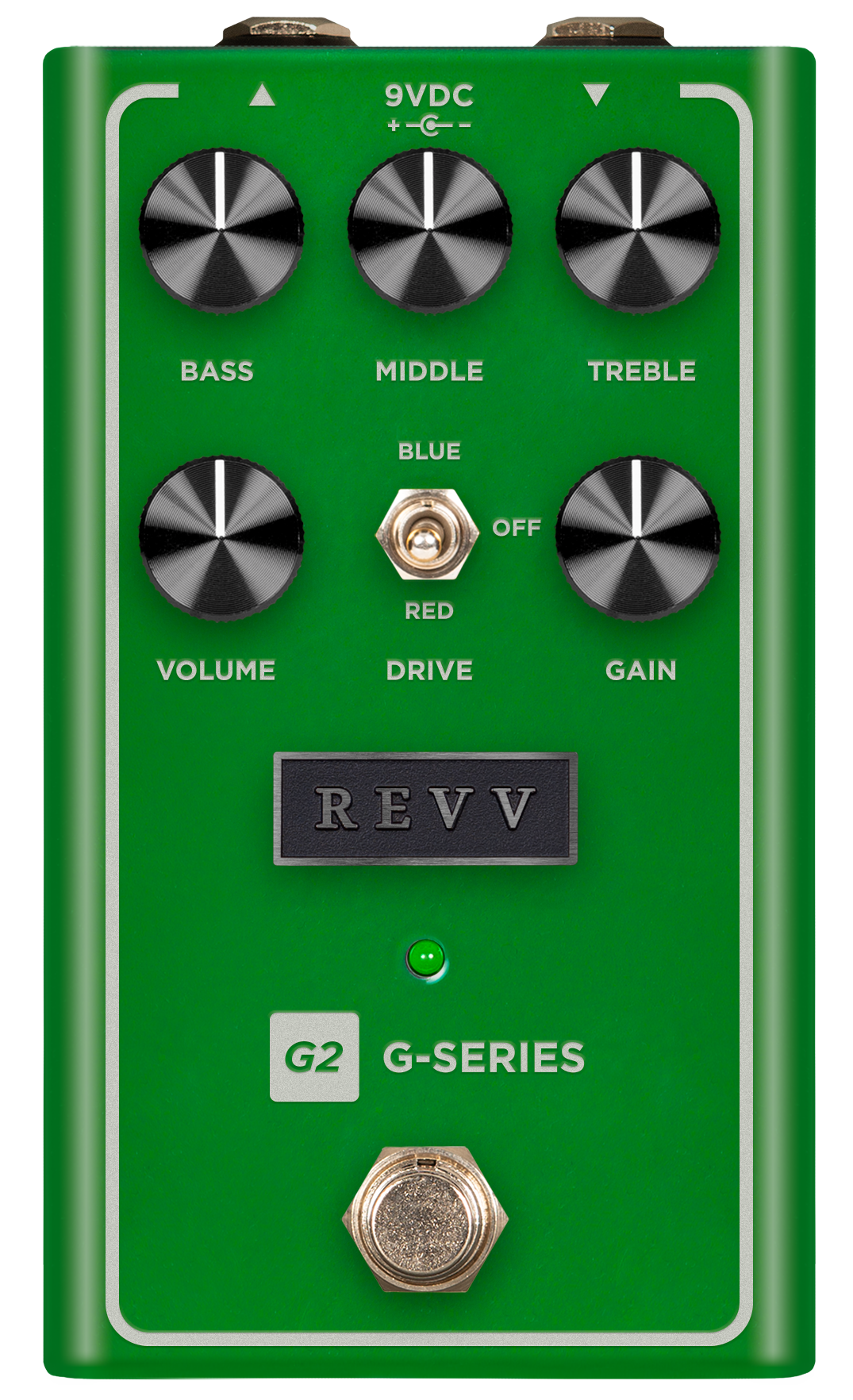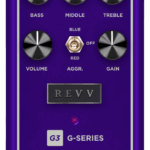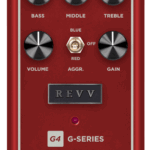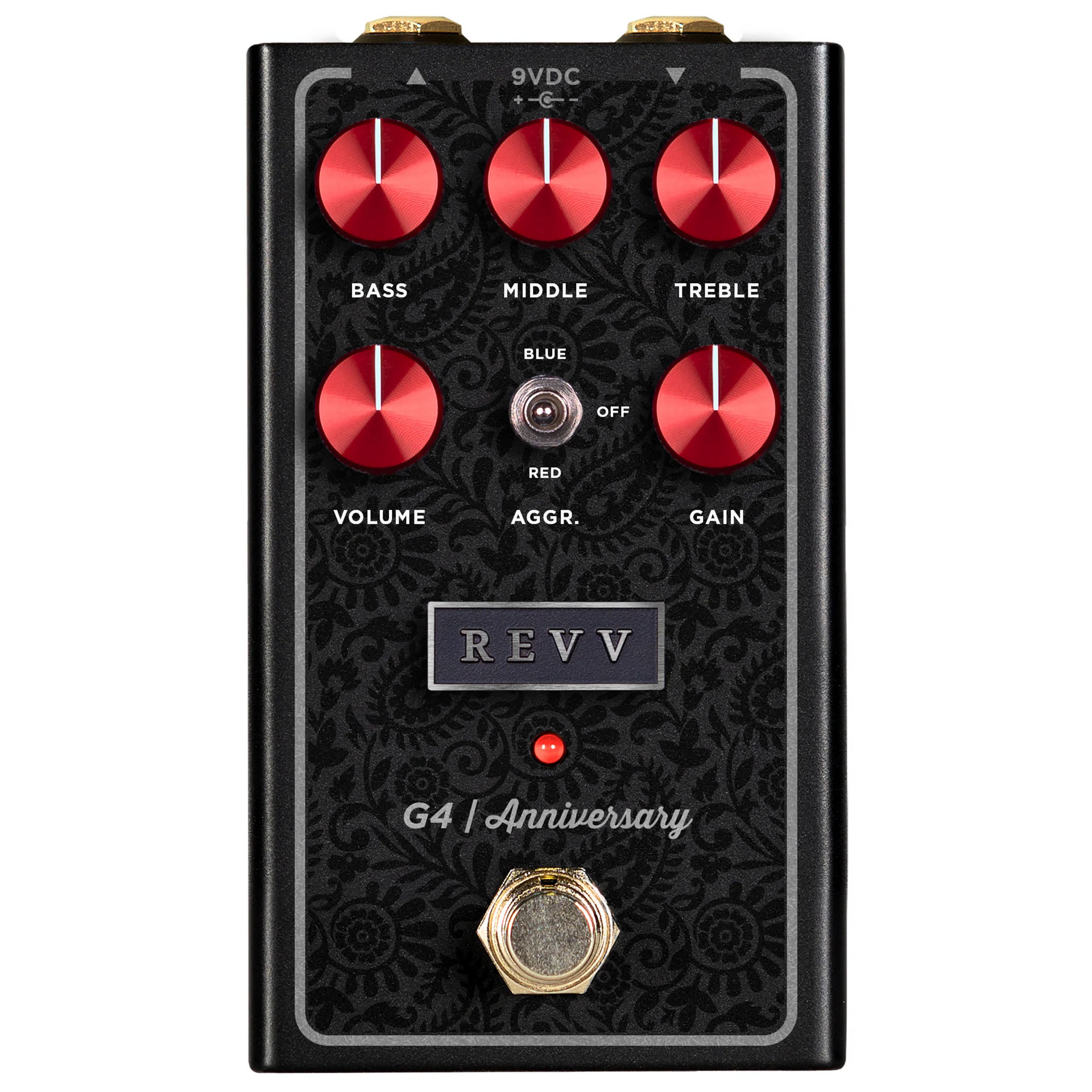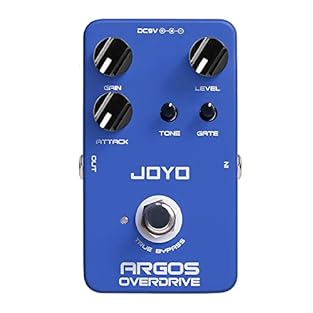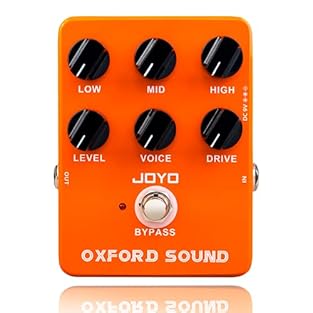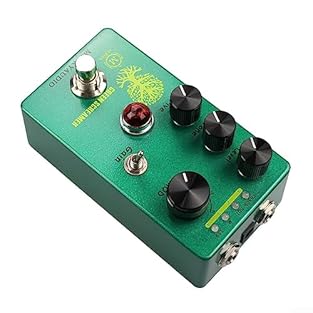Revv Amplification, while known for its high-performance amplifiers, also produces a range of pedals designed to deliver the same high-quality, versatile tones that their amps are celebrated for. Their pedals are engineered to provide guitarists with dynamic and flexible sound-shaping tools that maintain clarity, even at high gain levels. Revv’s pedal offerings are popular for their ability to produce both classic and modern sounds, making them suitable for a wide range of musical genres.
Some of Revv’s standout pedals include the G3, a high-gain overdrive pedal that emulates the signature sound of their Generator amplifiers, and the Tilt EQ pedal, which offers precise tonal control with a unique Tilt EQ circuit. These pedals allow players to dial in everything from smooth overdrive to heavy distortion, while the Tilt EQ provides an intuitive way to adjust the balance between bass and treble frequencies. The Revv pedals are known for their clarity, dynamic response, and ability to retain the guitar’s natural tone while enhancing it with rich harmonics and gain.
Just Pedal Ingredients.
Amplification — Amplification pedals bring your sound to life by boosting your signal and shaping its overall power and presence. They can act as clean boosts to lift your tone without colouring it, or as preamps that add warmth, grit, and character before it hits your amp. Think of amplification as seasoning for your sound — a touch more punch, sparkle, or drive that makes everything taste better without changing the recipe.. Distortion — Distortion pedals take your clean guitar signal and transform it into something bigger, bolder, and full of attitude. By clipping the waveform, they add sustain, bite, and aggression, creating that thick, compressed tone that’s powered rock music for decades. From the growling crunch of classic hard rock to the tight, saturated roar of modern metal, distortion is all about energy and presence. It gives every note weight and authority, pushing your amp to its limits and beyond.
There are countless flavours of distortion, each with its own texture and edge. Some sound smooth and creamy, others raw and gnarly like tearing fabric. It’s the sonic equivalent of turning up the heat until the sound cooks — rich, sizzling, and perfectly seasoned to taste. Whether used for rhythm muscle or soaring leads, a good distortion pedal doesn’t just add volume; it adds personality, grit, and that unmistakable sense of power under your fingers.. Overdrive — Like a golden layer of melted cheese — warm, gooey, and just put it all over. It adds just the right amount of richness and grit, turning a clean signal into something smooth and savoury. Designed to mimic the natural breakup of a tube amp pushed to its sweet spot, overdrive delivers the flavour of classic rock and blues in every bite. From creamy mid-gain warmth to crisp edge-of-breakup sparkle, it’s the comfort food of guitar tone — simple, satisfying, and endlessly versatile. Whether it’s a mild crunch or a full-bodied roar, overdrive is where good taste begins.. Pedal — Your pedal is like a signature dish for your sound — a flavour-packed creation that transforms the bland ingredients of your guitar into something unforgettable. Each one adds its own seasoning, texture, and heat, turning a simple meal into a feast of tone.
These tasty little boxes sit in a row, like plates on a buffet, letting you mix and match flavours as you play. With one tap of your foot, you can swap sweet for spicy, subtle for smoky, and serve up something completely new. From the comfort food of warm overdrive to the fiery kick of fuzz, from smooth jazz sauce to heavy-metal spice, pedals give players a full menu of options to express their taste. And just like with food — once you’ve tried one dish, you’ll want to sample them all.
Collecting, trading, and discovering new flavours soon becomes part of the joy of being a tone-loving gourmet geek with a guitar.. Preamp — A preamp pedal shapes and boosts your guitar’s signal before it reaches your amp or recording interface, giving you control over tone, gain, and headroom. It acts as the first stage of amplification, adding warmth, clarity, and character while preparing your signal for the next part of the chain. Some preamps emulate the response of classic valve circuits, while others offer clean, transparent tone shaping ideal for acoustic instruments or direct recording setups.
Used on its own, a preamp pedal can serve as the foundation of your tone, providing a consistent core sound wherever you play. When combined with other effects, it enhances dynamics and helps each pedal sound more defined and natural. Whether you’re looking to push your amp harder, bring life to a dull signal, or refine your sound for the studio, a good preamp pedal adds presence, punch, and musicality to any rig.. v2.
